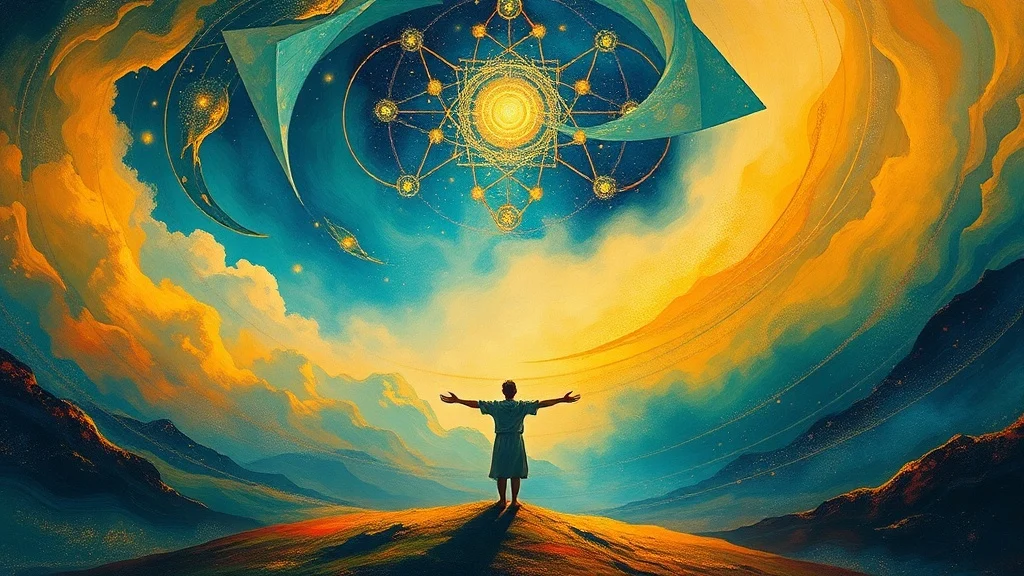5 Demographics of Dreamers of Abstract Places
Want a Personalized Dream Interpretation?
Curious about how people like you interpret this dream symbol? Explore personalized interpretations tailored to your demographic. Get personalized insights for free!
Get Free Interpretation Now →Table of Contents
1. Individuals with Mental Health Conditions
Abstract places in dreams often reflect the individual's inner world and the challenges they face. Individuals with mental health conditions may experience these dreams more frequently.
- Empty Spaces: A vast, empty void can represent feelings of emptiness, isolation, and disconnection.
- Confined Spaces: Narrow passages or claustrophobic rooms may symbolize a sense of being trapped or restricted.
- Liminal Spaces: Thresholds, hallways, or in-between places can indicate transitions, uncertainties, and a search for meaning.
- Surreal Landscapes: Dreamy, distorted environments can represent altered perceptions and difficulty distinguishing reality from imagination.
- Chaotic Environments: Scenes of chaos or destruction reflect internal turmoil, anxiety, and a loss of control.
Understanding the symbolism of abstract places can aid in interpreting dreams and gaining insight into the individual's emotional experiences.
2. People Experiencing Trauma or Stress
Abstract Places in Dreams of Trauma Survivors
For individuals coping with trauma or stress, dreamscapes often take on abstract dimensions, reflecting their inner turmoil. These abstract places symbolize the fractured and disorienting nature of their experiences.
-
Labyrinths and Mazes: These environments represent the confusion and uncertainty that plague trauma survivors. They may feel lost and trapped, unable to find a way out of their emotional distress.
-
Empty or Abandoned Spaces: These desolate areas mirror the feelings of isolation and emptiness often experienced by trauma survivors. They may feel disconnected from their surroundings and devoid of purpose.
-
Fragmented and Surreal Landscapes: Dream landscapes may become fragmented, with familiar objects and places appearing distorted or out of context. This reflects the shattered sense of reality that trauma can induce.
-
Unreal or Otherworldly Places: These ethereal environments symbolize the surreal and alienating nature of traumatic experiences. Survivors may feel disconnected from their own bodies or minds, as if they are in a parallel dimension.
3. Individuals with Creative or Artistic Inclinations
Abstract Places for Creative Individuals:
For individuals with creative or artistic inclinations, dreams of abstract places hold profound symbolism, beckoning them towards realms of unbounded imagination and introspective discovery. These landscapes often reflect the dreamer's inner world, a tapestry of abstract forms, vibrant colors, and ethereal perspectives that transcend the boundaries of reality.
Within these dreamscapes, the dreamer may find themselves navigating through labyrinths of thoughts and emotions, exploring the depths of their creativity. The morphing walls and shifting spaces symbolize the fluidity of their artistic process, allowing them to experiment with new ideas and perspectives. The surreal environments challenge their conventional thinking, inviting them to embrace the unknown and delve into the depths of their imagination.
These abstract places serve as a canvas for the dreamer's artistic expression, where they can explore emotions and communicate their inner experiences through non-figurative forms. The fragmented and abstract nature of the landscape reflects the fragmented and multifaceted nature of their creative mind.
The colors and textures found in these dreamscapes hold significant meaning. Vibrant hues ignite the dreamer's passion and energy, while muted tones evoke a sense of contemplation and reflection. The textures of the environment, whether rough or smooth, soft or hard, represent the tactile qualities of their artistic expression.
By interpreting the symbolism of abstract places in their dreams, individuals with creative or artistic inclinations can gain insights into their creative process, emotional state, and artistic direction. These dreamscapes offer a glimpse into the boundless possibilities of their imagination and serve as a source of inspiration for their artistic endeavors.
4. Those Interested in Spiritual or Esoteric Practices
Abstract Places: A Spiritual Odyssey

For those deeply engaged in spiritual or esoteric practices, the appearance of abstract places in dreams holds profound significance. These ethereal realms reflect the dreamer's inner spiritual journey, offering a glimpse into their subconscious depths.
Abstract places can manifest in various forms, each carrying its unique symbolic meaning. They may appear as vast, open fields, symbolizing a sense of liberation and expansion. Or, they may present as labyrinthine corridors, representing the challenges and obstacles encountered on the spiritual path.
The colors and textures of the abstract place also play a crucial role. Bright, vibrant hues suggest a positive and uplifting experience, while muted or earthy tones indicate a period of introspection or reflection.
The presence of other beings in the abstract place can provide additional insights. Spiritual guides or mentors may appear, offering guidance and support. Conversely, enigmatic figures or threatening entities may challenge the dreamer's beliefs and push their limits.
Interpreting abstract places in dreams requires a deep understanding of one's own spiritual beliefs and practices. By contemplating the symbols, colors, and experiences within these ethereal realms, the dreamer can gain valuable insights into their spiritual evolution and the path that lies ahead.
5. Individuals Exploring Subconscious or Unconscious Realms
For those delving into their inner worlds, abstract places in dreams hold a profound significance. These enigmatic realms, devoid of familiar landmarks and conventional boundaries, invite the dreamer to navigate the depths of their subconscious or unconscious minds.
They may symbolize the uncharted territories within oneself, where hidden emotions, thoughts, and memories reside. As the dreamer explores these abstract landscapes, they confront their inner demons and embrace their hidden potential. The journey through such places can be both exhilarating and transformative, leading to a deeper understanding of the complexities of one's own psyche.
Back to interpretation of abstract place
